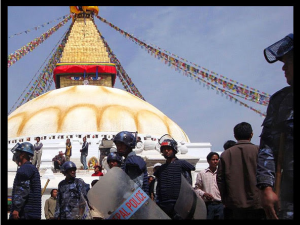PhotoVoice is a charity organization that helps disadvantaged and underprivileged communities develop skills in effective storytelling through photography.Initially beginning as a Volunteer basis, it quickly achived enough acclaim to become a registered charity by 2013. PhotoVoice is currently doing a brilliant job, partnering with various NGO’s such as Amnesty International and Save The Children. Often times where photographers can’t go, bringing the means of story telling to the community can prove to be really helpful, specially when lots of these stories deserve to be told and the end result is an intimate portrait of the world of these communities. I really enjoyed looking at their project from Afghanistan,where they wanted to document the life of Afghanistan from a child’s perspective. As a result, PhotoVoice taught 13 boys and girls under the age of 16 the basics of a camera and were give cameras to shoot around their communities. It is such a fresh perspective coming from a place which our media depicts so negatively.
Author: Karanjit Singh
I recently discovered a kickstarted campaign that recently met its crowdsourced funding to publish a book containing photographs taken by Tibetan refugees living in Nepal. Mikel Dunham, an acclaimed author who frequently investigates and writes about the situation of tibetan diaspora living in exile decided to give 10 inexpensive digital cameras to young tibetan refugees living in camps in nepal. Since majority of the Tibetans that escape their homeland in order to be closer to the Dalai Lama first make their way as refugees in Nepal before heading to India. Since the pressure by the Chinese is ever increasing on the Nepalese government, Nepal now has imposed sanctions on tibetans flee from Tibet so much so as to not allow them to publicly celebrate the birthday of Dalai Lama, own businesses or even any kind of property. This in turn has led to widespread poverty in these refugee camps where even the basic rights such as registration of new borns and marriages have even been denied to exiled tibetans.
According to Dunham, he wanted the tibetans themselves to document the plight of their community and the increasing encroachment of their basic rights by the Nepalese government. Despite the fact that a lot of westerners visit these places, their photographs seem to romanticize the culture and and deem it as exotic whilst not really examining the present adversity the community faces everyday. Though the photographs are not as beautiful to look at, they still serve as an important piece of evidence in a long struggle for freedom. By empowering the community to document their own stories, Dunham gives us a significant perspective that is lacking in the documentation of the Tibetan Struggle. The project can be found here.
Last summer, I had the wonderful opportunity to reside in the Tibetan community based in Palpung Monastery,India, where I had been working on my ongoing project on the exiled Tibetan Diaspora. Initially when I arrived at the place, I was quite nervous since being in a completely new environment among strangers seemed a daunting task to search for a story.
After a lot of introspection I decided to approach the Rinpoche of the Monastery to allow me to teach the small monks photography in their free time. This activity, that began as a way for me to ‘find a story’ quickly became something that I looked forward to everyday. Besides that it was really interesting to see from the perspective of these little children who had never held a camera before. Everyday I would devote an hour to gather a group of kids interesting in learning the skill and slowly they started treated me as their own; I didn’t feel like an outsider anymore. It is in fact that very trait of successful photographer that allows them to assimilate so well into the communities they are photographing that they do justice to the stories and aren’t merely romanticizing the struggles of people.
Before leaving the monastery I dropped off two point and shoot cameras with the children hoping to come back after a year and see how they have documented their own narratives. This summer I will be creating a blog comprised of all the images they have taken hoping to find a story that I couldn’t document myself.






